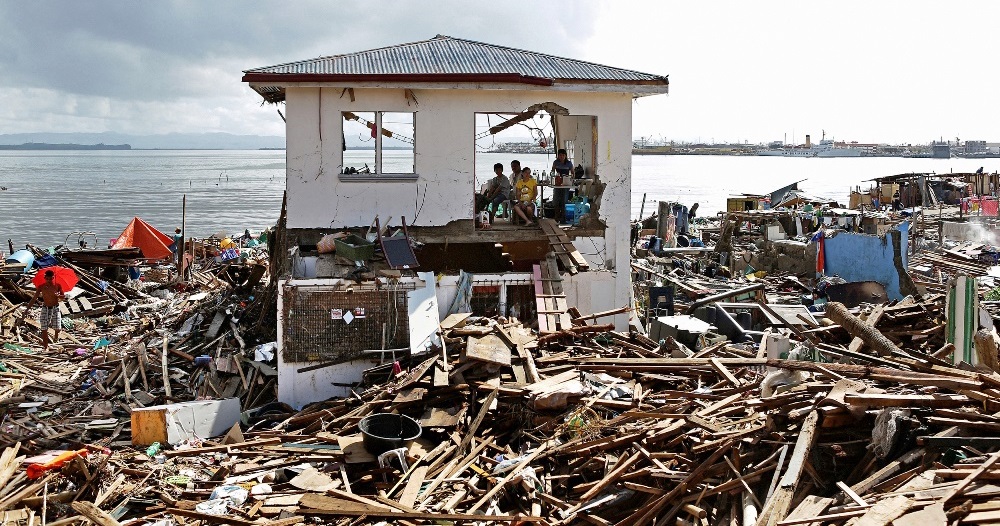On May 10, 2019, the UN Development Programme (UNDP) and partners launched new reports and guidelines geared to supporting resilient, human-centered disaster recovery.
One report—titled “Disaster Recovery: Challenges and Lessons“—presents the increasing impact of disasters on people, communities and economies. The report states that low- and lower-middle-income countries are disproportionately affected by disasters: “up to 325 million extremely poor people are expected to live in the 49 most hazard-prone countries by 2030.”
Further, disasters often cause the world’s poor to “fall further into poverty,” and have disproportionate impacts on women and children, who are more likely than men to die during a disaster. Economically, losses from disasters have increased “significantly in the last three decades.” In 2017 values, the report finds that overall losses from disasters totaled USD 340 billion.
As a result of the global climate crisis, the report finds the intensity and frequency of hydrometeorological-related disasters are increasing, with changing temperatures, extreme weather patterns, and rising sea levels exacerbating disaster risk. The report predicts these trends will “dramatically worsen.”
Within this context, the report argues that disaster recovery offers an opportunity to “build back better” through risk-informed, resilient and inclusive approaches. The report provides a number of recommendations, and showcases examples of how recovery can address underlying risks and vulnerabilities, build resilience, and rebuild people’s lives.
The new guidelines—titled “Risk-informed Development: From Disaster to Resilience“—were published with the Overseas Development Institute (ODI) and the Swiss Agency for Development and Cooperation (SDC). They aim to improve the quality of post-disaster recovery through encouraging the active engagement of people and communities throughout the recovery process.
The guidelines seek to guide UN agencies, governments, non-governmental organizations (NGOs), the private sector and other stakeholders in engaging communities throughout post-disaster needs assessment, recovery planning, implementation and monitoring and evaluation. The guidelines seek to improve the quality of post-disaster recovery.
UNDP, the EU and the World Bank developed another set of guidelines—titled “Guidelines for Assessing the Human Impact of Disasters“—as part of the Post-Disaster Needs Assessment (PDNA) guidance. These guidelines similarly aim to support a people-centered, human-recovery approach.
Such an approach aims to ensure that people who recover from disasters have equitable access to secure livelihoods, health and other essential services, shelter, land, security, freedom and other characteristics that support people’s productive and creative lives. The guidelines seek to ensure that a PDNA accurately assesses the human impact of disasters in support of sustainable, longer-term development.
A new document—titled “Guidance for PDNA in Conflict Situations“—shares practical advice for conducting a PDNA in a conflict situation. The guidance recommends that experts conducting a PDNA in a conflict situation remain aware of underlying conflicts and social tensions and formulate a recovery program that addresses these issues.
UNDP showcased its reports and guidelines on disasters at the Fourth World Reconstruction Conference, which convened from May 13 & 14, 2019 in Geneva, Switzerland. Speaking at the Conference, UNDP’s Crisis Bureau Director, Asako Okai, called for ensuring that recovery processes are “inclusive and participatory” and help countries and communities to “achieve their visions of resilient and sustainable development in line with the 2030 Agenda and the Sendai Framework.”
Okai highlighted the role of Human Impact Assessments, including the above-mentioned guidelines, in strengthening the global community engagement towards more inclusive, resilient recovery in support of the SDGs and the Sendai Framework for Disaster Risk Reduction (DRR).
Featured photo via Adobe Stock.
Links:
Disaster Recovery: Changes and Lessons] [Publication Landing Page] [Publication: Risk-informed Development: From Disaster to Resilience] [Publication Landing Page] [Publication: Guidelines for Assessing the Human Impact of Disasters] [Publication Landing Page] [Publication: Guidance for PDNA in Conflict Situations] [Publication Landing Page] [UNDP’s Crisis Bureau Director Statement] [Fourth World Reconstruction Conference Website]

